Diagram based Missing Number and Alphabets
Herein numbers or letters or both are represented through one or more figures according to a certain pattern/rule.
So, here we are given Number series, Letter series and Alpha-Numeric series, but in the form of a diagram.
Candidates are required to find out the missing character.
Diagram-based number and alphabet series
In Diagram-based number/alphabet series (or Number/Alphabet Puzzles), some numbers/alphabets are arranged in a certain pattern in a diagram.
We need to decipher the underlying pattern/logic and find the missing number/alphabet.
The underlying pattern/logic may be : addition, subtraction, multiplication, division, squaring or cubing etc.
Type 1: Linear Diagram
Here numbers/alphabets are arranged in a one-dimensional manner (1-D Diagram). So, this is pretty similar to the normal number/alphabet series questions that we encountered in previous sub-module.
Let’s see some examples.
Q. Find the missing number out of the given options:
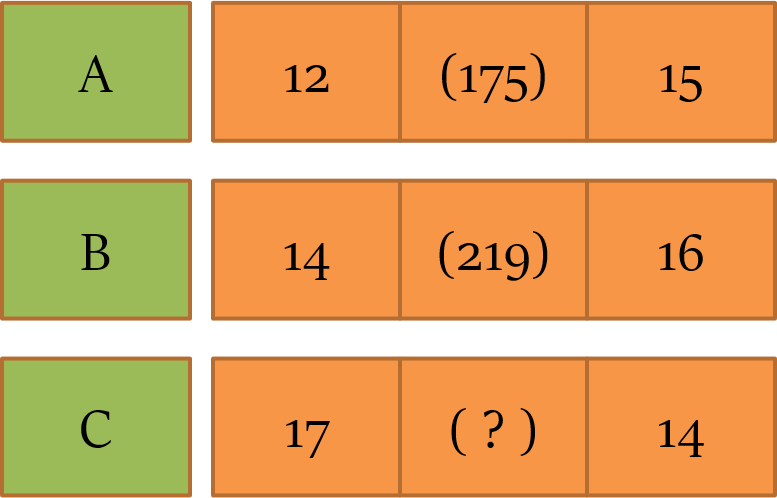
(a) 410 (b) 318 (c) 233 (d) 215
Explanation:
Here, middle number = product of left and right numbers – 5
A: 12 × 15 – 5 = 175
B: 14 × 16 – 5 = 219
Similarly, C: ? = 17 × 14 – 5 = 233
Answer: (c)
Q. Find the missing number out of the given options:

(a) 16 (b) 20 (c) 22 (d) 28
Explanation:
Figure I: 84 ÷ 12 = 7; 7 × 2 = 14
Figure II: 81 ÷ 9 = 9; 9 × 2 = 18
Figure III: 88 ÷ 11 = 8 and 8 × 2 = 16
Answer: (a)
Type 2: Matrix Diagram
Here numbers/alphabets are arranged in a two-dimensional manner (2-D Diagram), i.e. in rows and columns.
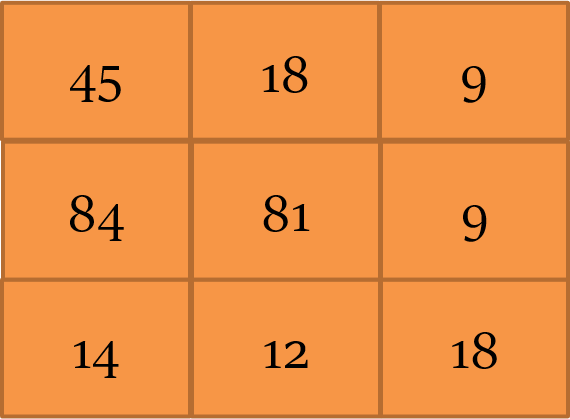
Only two logics are possible in such questions:
- Vertical operations
- Horizontal operations
Most of the times, we can get a hint by looking at the bigger numbers, whether they are placed in the lowest row or rightmost column. While deciphering the logic, we should move from small to large numbers.
Q. Find the missing number out of the given options:
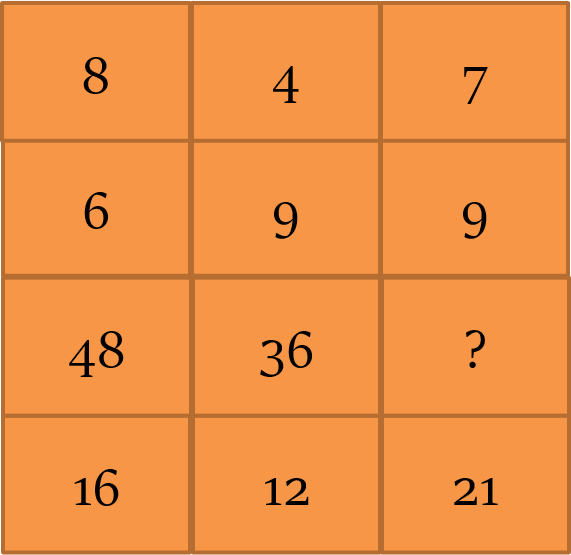
(a) 16 (b) 63 (c) 24 (d) 45
(SSC Question)
Explanation:
Column I: 8 × 6 = 48; 48 ÷ 3 = 16
Column II: 4 × 9 = 36; 36 ÷ 3 = 12
Column III: 7 × 9 = 63; 63 ÷ 3 = 21
Answer: (b)
Q. Find the missing letter out of the given options:
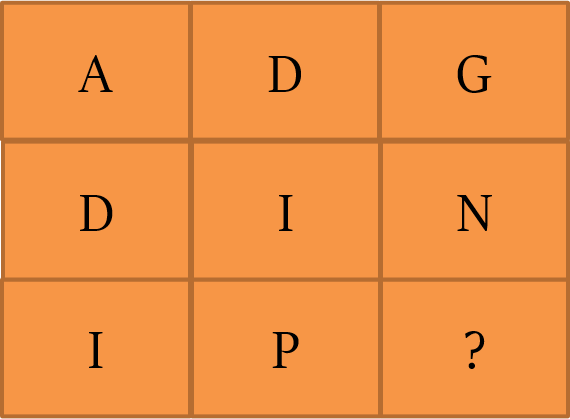
(a) X (b) V (c) Y (d) W
Explanation:
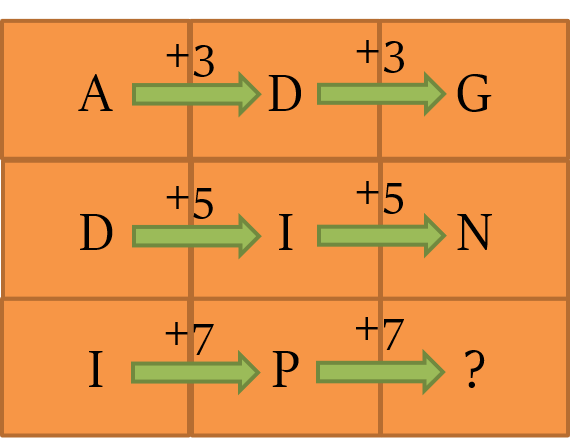
Answer: (d)
Type 3: Circular Diagram
Here numbers/alphabets are arranged in a square/circle.
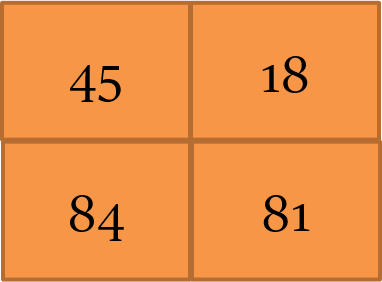
Only two logics are possible in such questions:
- Move clockwise
- Move anti-clockwise
Q. Find the missing number out of the given options:
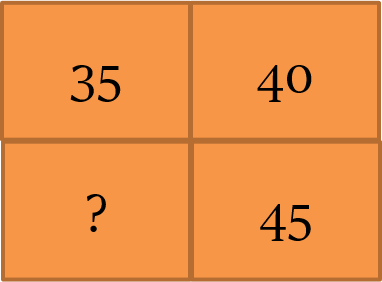
(a) 48 (b) 60 (c) 50 (d) 55
Explanation:
Moving clockwise, the pattern is as follows:
35 + 5 = 40 and 40 + 5 = 45
So, missing number = 45 + 5 = 50
Answer: (c)
Q. Find the missing number out of the given options:

(a) 5 (b) -5 (c) 12 (d) -12
Explanation:
Figure I: 2 × 3 × 5 = 30
Figure II: 5 × 1 × (-1) = -5
Figure III: 4 × 3 × (-1) = -12
Answer: (d)
Type 4: Circular Diagram with a centre
Q. Find the missing number out of the given options:

(a) 86 (b) 94 (c) 82 (d) 78
Explanation:
The sum of squares of the peripheral numbers is equal to central number.
Figure I:
Figure II:
Figure III: Similarly,
Answer: (a)
Q. Find the missing number out of the given options:

(a) M (b) B (c) R (d) W
Explanation:
Figure I: (7 × 8) – (2 × 5) = 56 – 10 = 46 and 46 ÷ 2 = 23 = W
Figure II: (7 × 10) – (4 × 6) = 70 – 24 = 46 and 46 ÷ 2 = 23 = W
Figure II: (8 × 6) – (2 × 6) = 48 – 12 = 36 and 36 ÷ 2 = 18 = R
Answer: (c)
Type 5: Band-aid Diagram
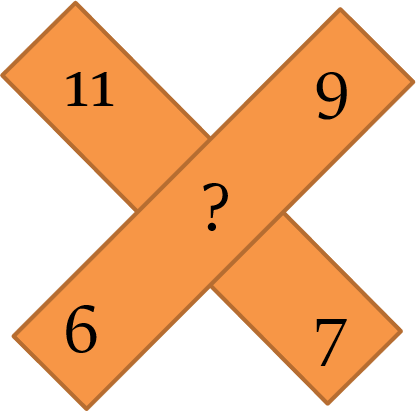
Possible Logics:
Add/Subtract/Multiply all numbers directly, e.g. 11 + 9 + 7 + 6
Operate on individual numbers:
- Either numbers on the same side, e.g. 11 and 6
- Or numbers placed diagonally, e.g. 11 and 7
Q. Find the missing number out of the given options:

(a) 74 (b) 121 (c) 82 (d) 131
(SSC Question)
Explanation:
The sum of the cross products of the diagonally opposite numbers gives the central number.
Figure I: (4 x 6) + (6 x 7) = 24 + 42 = 66
Figure II: (8 x 9) + (5 x 14) = 72 + 70 = 142
Figure III: (11 x 7) + (9 x 6) = 77 + 54 = 131
Answer: (d)
Type 6: Chopstick Diagram
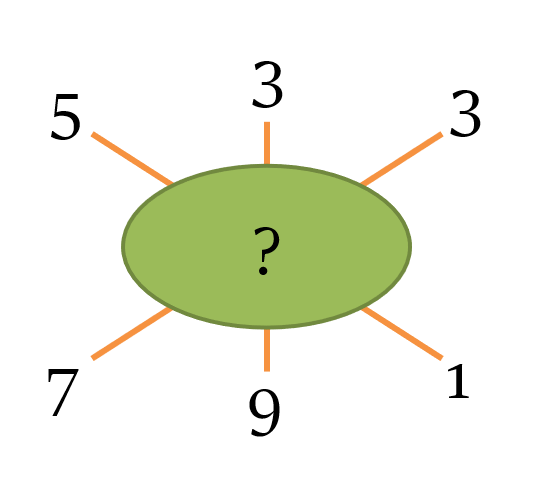
Possible Logics:
Add/Subtract upper and lower numbers directly, e.g. 533 + 791
Operate on individual numbers:
- Either numbers on the same side, e.g. 5 and 7
- Or numbers placed diagonally, e.g. 5 and 1
Q. Find the missing number out of the given options:

(a) 256 (b) 262 (c) 191 (d) 251
(SSC Question)
Explanation:
Figure I:
2 - 1 = 1
6 - 3 = 3
5 - 4 = 1
Figure II:
4 - 2 = 2
6 - 2 = 4
8 - 0 = 8
Figure III:
7 - 5 = 2
9 - 3 = 6
3 - 1 = 2
Answer: (b)
Type 7: Reverse Pyramid Diagram
Here, the numbers are arranged in a reverse pyramid structure.
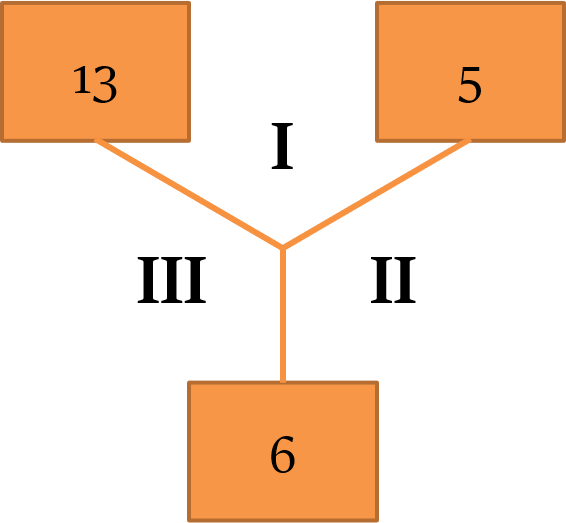
Possible logics:
Mathematical operations can occur in either of the three sides, I, II and III.
Q. Find the missing number out of the given options:

(a) 5 (b) 2 (c) 4 (d) 11
Explanation:
Figure I: (13 + 5)/3 = 6
Figure II: (34 + 8)/3 = 14
Figure III: (8 + 7)/3 = 5
Answer: (a)